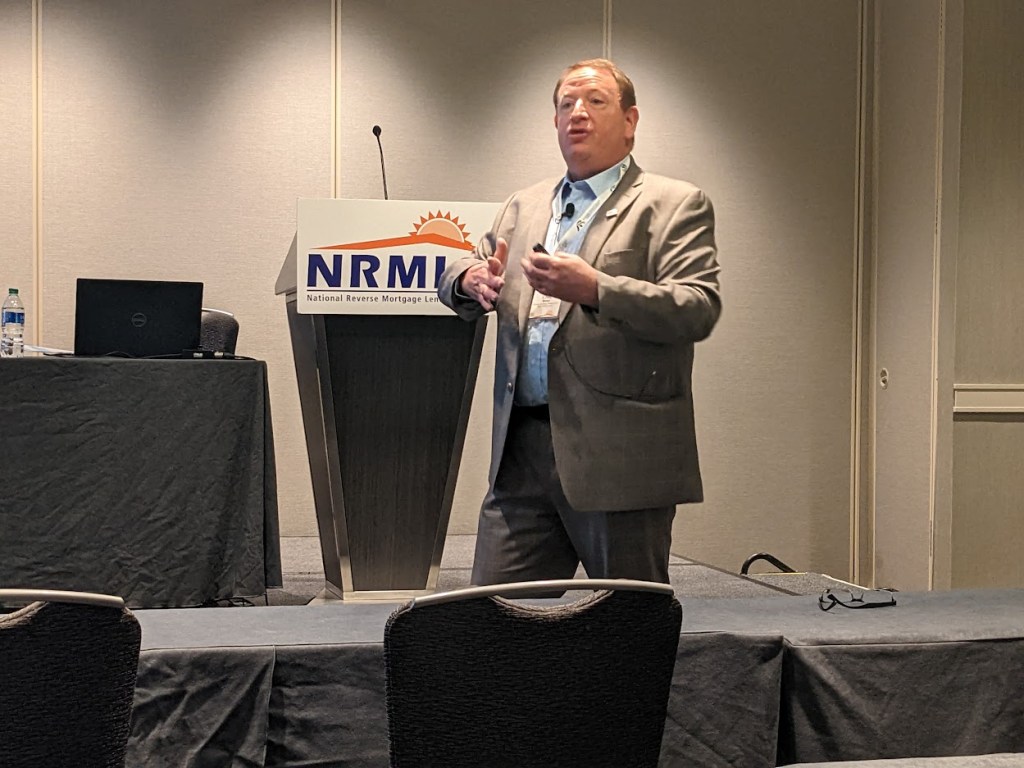Aspirations to become a reverse mortgage professional are not common, which is why RMD’s “Origins” series has aimed to lift the veil surrounding the reasons why people decide to devote themselves to this business.
Industry educator and trainer Craig Barnes, most recently from Reverse Mortgage Funding (RMF), has been a visible fixture of many of the industry’s major in-person events. He’s also worked to shape communication and education initiatives through his association with the National Reverse Mortgage Lenders Association (NRMLA) as recently as last month.
RMD sat down with Barnes in the latest episode of The RMD Podcast, and he explained how something of a professional accident put him on the path to a reverse mortgage career.
The accidental career
Barnes’ reverse mortgage journey began in the summer of 2004, when he was hired by BNY Mortgage to train employees broadly about both the company’s forward and reverse channels.

“I would say [my career in reverse] was somewhat accidental,” Barnes says. “Reverse needed some training as we were building that channel, and so I was asked to sit with folks in sales and operations to learn the system and to learn the product. Especially when BNY later became EverBank Reverse, we were only in reverse. So, we divested ourselves of the forward world, and it just stemmed from there. I was hired to be a mortgage trainer, which ended up being reverse-only.”
Still as accidental as his entrance into the industry may be, Barnes describes why he has found such a fit by working in reverse, and how he has cultivated a fondness for it.
“I love the product, I think it adds so much value to so many people, so I really wanted to stay with it,” he says. “I think it probably took a little bit of convincing at first, because we all hear the myths and the stories that ‘the bank gets your house,’ [and I realized] quickly that that wasn’t true. Talking to salespeople who had clients whose lives were changed by having the ability to stay in their home, or to eventually purchase a home that might be more appropriate for their needs in their later years really stuck with me.”
It was the variety of use cases that helped him to see a career path, particularly due to its unrealized potential as a financial planning tool, he says.
Reverse mortgage educational hurdles: ownership of the home, line of credit
In his capacity as a trainer for major reverse mortgage lenders and through his collaborations with the trade association, Barnes sees a series of persistent issues that tend to crop up in conversations about the product. By and large, the biggest lingering misconception today is the same as it has been for the past several years, and which originators have long fought against: the idea that “the bank takes your home.”
“I think we’ve done a great job internally in our industry and with new participants [from] the forward world [to broaden] understanding and get the message out that that simply isn’t true,” Barnes says.
But there are other product features that should be talked about more, Barnes says, including line of credit growth for adjustable-rate HECMs.
“It’s just not talked about enough,” he says. “I think it’s one of those features that if explained correctly can make a really big difference. It really can hit home and [help] people understand, especially as we see economies change.”
The line of credit growth could be an area where professionals can communicate a potential advantage to a high-rate environment, Barnes says.
“[High rates] might be decreasing our principal limits and maybe increasing our loan balances faster, but also remember that if you have a higher rate, that line of credit is going to grow faster as well,” Barnes says. “So especially in not-so-great markets, I think explaining that there are still advantages to the product is huge. Line of credit growth is one of the things that is a great tool and feature of the product, and isn’t always discussed or even understood.”
Source of reverse mortgage competition
Segments of the reverse mortgage industry have long advocated that a path forward for the industry is through greater collaboration with traditional mortgage professionals, while others have seen those forward providers as competitors for senior clients. For Barnes, the biggest direct reverse mortgage competitors are home equity line of credit (HELOC) providers.
Still, there is also a competition to prove that a reverse mortgage’s product features could be a better choice for seniors who are thinking of selling their home.
“[Those seniors may not have thought] a traditional mortgage was feasible for them, or that they would get approved if they’re 65-75 years old,” he says. “They don’t want to go into a new 10-, 15- or 30-year mortgage because they’re concerned about the payments.”
Seniors may see HELOCs as relatively easy to get in many cases, but for those borrowers contemplating a sale, the industry is competing to inform them of another option that could still eliminate a monthly mortgage payment, Barnes says.
“[They may not] even know of alternatives like reverse mortgages,” he says. “[They may not] even know that there’s an option, so they’re going down the sale route. And now, we can show them a different way.”



